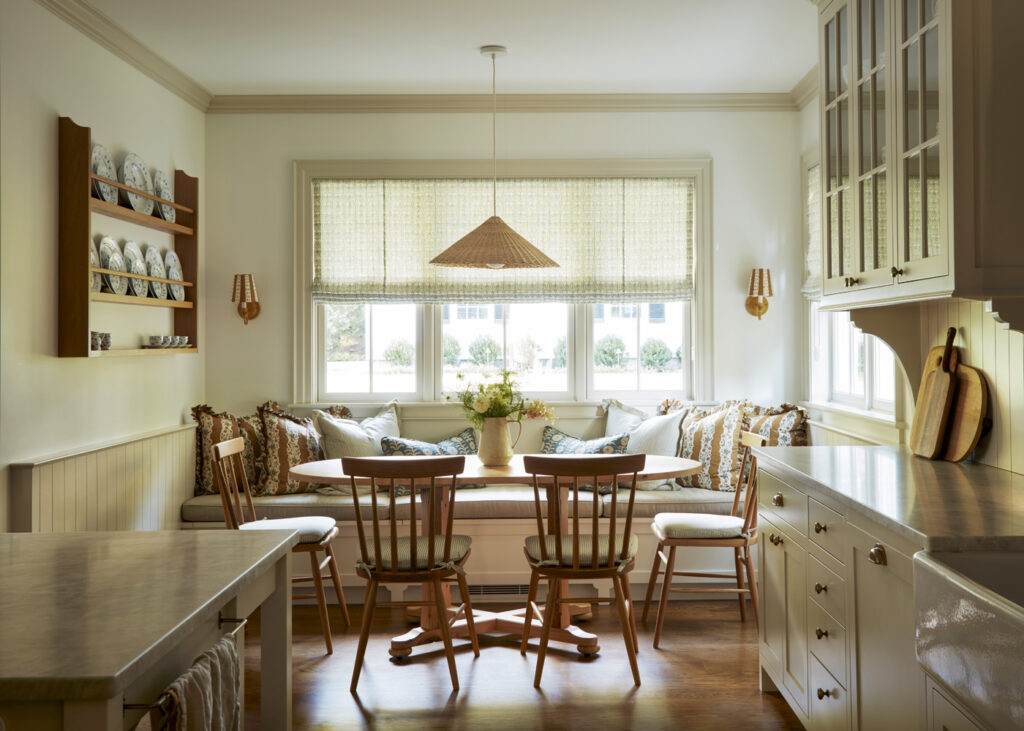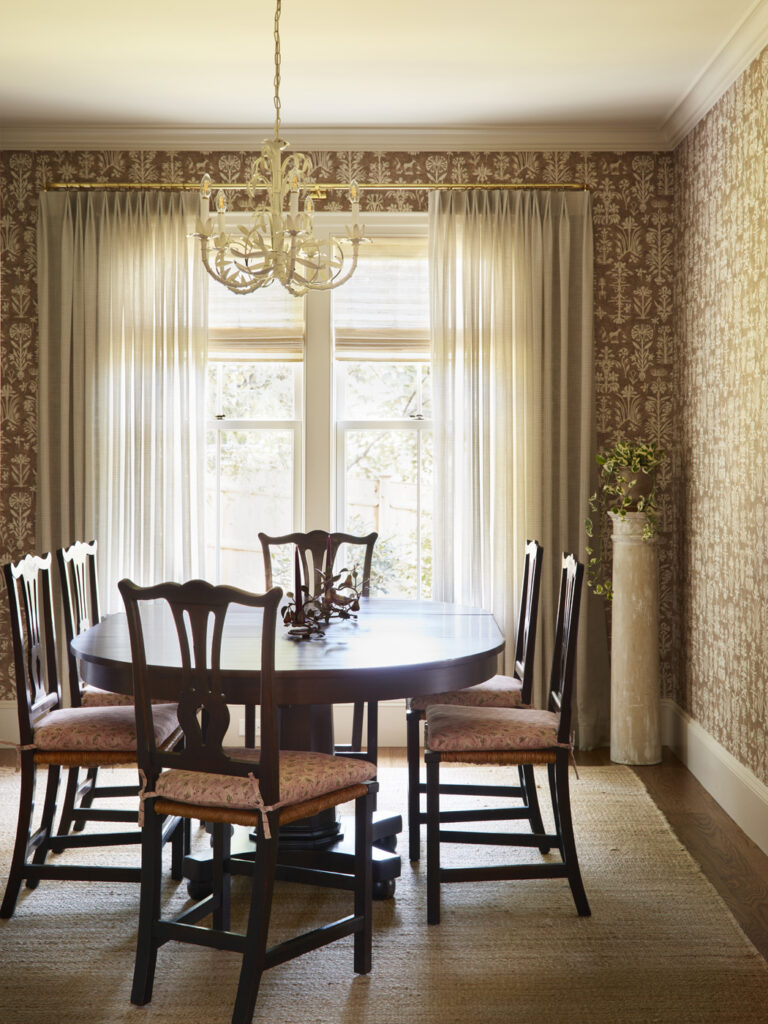The house was built in 1872 and later used as a summer cottage for Reverend George C. Needham. During this period, top hats, pocket watches, and travel by horse and carriage were norms of the reverend’s summer household.
Since this debut, the house has stood as a slice of Manchester history for decades. Recently, it was purchased by a couple with two young sons: “We were drawn to its charming New England personality and Arts and Crafts influence,” says the owner of the Stick-style gem. “We also love how it’s tucked away off the street under a beautiful old copper beech tree. It feels like an oasis from town.”

Considering the structure’s age, the owners faced a challenging road ahead: how to retain its historic character while updating key features to jibe with how their family lives now. They hired Essex-based architecture, construction, and millwork firm Carpenter & MacNeille to spearhead an extensive renovation, one that involved a complete restructuring of the exterior.
The architects added historically appropriate details like saw-toothed vertical siding and decorative rafter ends and reintroduced long-lost elements. “They used historic photographs from the Manchester Historical Museum to recreate our front porch and refurbish the original glass French doors opening onto it,” explains the homeowner. The footprint expanded minimally; however, Carpenter & MacNeille and Found Design still achieved an updated floor plan, complete with modern kitchen, mudroom, and a full primary suite.
“When we purchased the house, we wanted to focus on the interiors as much as the architectural elements,” continues the owner of their road to modernization. They engaged Stacey Clarimundo and Hattie Holland of Found Design Studio to steer the interior design from day one.





“Their insights, in partnership with Carpenter & MacNeille, were truly invaluable,” explains the owner. “They helped navigate our evolving needs as a young family and worked hard to understand how we would live and spend time in our home. It was the best decision we could have made.”
Generating elegant, comfortable, welcoming spaces was of the utmost importance. Also, for the interior designers, the owner’s love of patterns and textiles was a delightful bonus. “Our client came to us with imagery that spoke to her,” says Clarimundo, who launched Found Design Studio in 2018. “A lot was English cottage inspired, which we modernized a touch.”
“She didn’t want a lot of fuss, but she loves layering,” adds Holland, Found’s senior designer. The duo sought to achieve a sense of richness with the interiors, to lean into the historic atmosphere. Building off a blank slate of painted wainscoting and beadboard, they infused the primary living spaces with muted earth tones: rust browns and shades of green. They intertwined unlacquered brass, copper, wicker, and patterned fabrics throughout.



For the kitchen, the owner envisioned the heart of her home feeling family-friendly, light, and bright. To avoid too much modernization, the Found designers collaborated with Carpenter & MacNeille on the cabinets. “We gave the cabinets more of a unique, furniture-like feel,” describes Holland. A backsplash of glossy Zellige tile and patterned Penny Morrison window treatments keep the room feeling fresh yet still neutral.
“She specially asked for that banquette,” says Clarimundo of the breakfast nook. “It’s where she wanted the family to hangout for meals and where she imagined herself lingering with her laptop and a cup of tea.”
The level of formality increases in the dining room, where a Lewis & Wood wallpaper and vintage chandelier, sourced by the client, steal the show. After some initial debate, designers and client decided to refinish the antique mahogany dining set, an heirloom from the husband’s family. “It ended up being the perfect choice for this elegant space,” says Holland.


In contrast, the living room has a more low-key vibe. With shiplap on the ceiling, rounded ceiling corners, and groupings of double-hung windows, it feels like an enclosed porch. “We gave this room a more loung-y, comfy, softer feel with lots of custom upholstery,” notes Clarimundo. A sage green paint on the built-in livens the space. “If we had just used the wall color, that feature would have fallen flat,” asserts the designer, who used the same trick in the husband’s office, where a Farrow&Ball Inchyra Blue on the millwork gives the small, handsome space definition.
“While each space is defined and separate, the kitchen, dining room, and living room can all be seen from the main hall,” says Holland Clarimundo adds: “We didn’t want everything to feel the same; we worked hard to create curated collections, to assemble items that tell the story of a household built over time, versus everything being picked at once.”
Now, the family feels right at home, knowing they did their best to honor the cottage’s 150-plus-year past. Here, under the copper beech tree, history remains, but life goes on.

